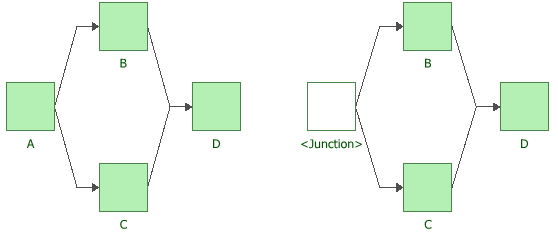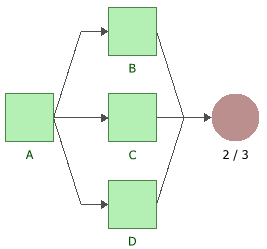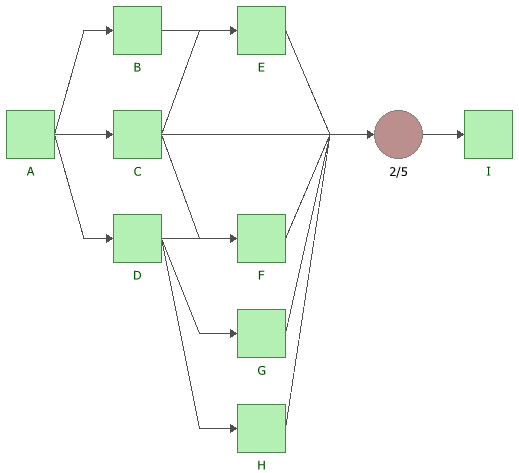Examples of RBD Configurations
In a basic series configuration, all items must work for the system to work. The following example shows standard blocks connected in series. The system fails if Block A, Block B or Block C fails.

In a basic parallel configuration, items are considered to be redundant. In the RBDs shown next, the system will continue to function if either Block B or Block C fails. (The second RBD shows an example of a junction block used as a starting block.)

The following example shows a k-out-of-n configuration where Block B, Block C or Block D can fail without causing system failure, but if two of the blocks fail, the system will fail.

The following example shows a complex diagram with a node configuration. If more than three of the five blocks (blocks C, E, F, G and H) leading to the node block fail, the system will fail.
